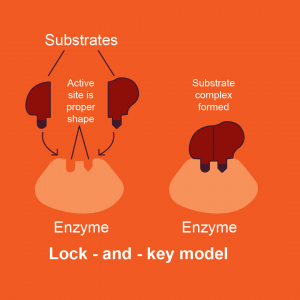Energy and energy transformations
Recall that energy is the capacity to do work. Some chemical reactions require an input of energy. The formation of carbonic acid (H2CO3) from CO2 and H2O requires an input of energy and is an endergonic reaction. However, the reverse reaction, where CO2 and H2O are formed from the breakdown of H2CO3 releases energy. Chemical reactions that release energy are called exergonic reactions.
Every chemical reaction will transform energy. The first law of thermodynamics states that energy can neither be created nor destroyed. The energy required or released from chemical reactions is not created nor lost by cells. The energy already existed in the universe before the reaction occurred. So, where does the energy come from for endergonic chemical reactions to proceed?
Outside of cells, the ambient heat energy provides the energy for chemical reactions to occur. The formation of carbonic acid under standard conditions (25°C, 1 atm) takes 60–90 seconds using ambient heat. That may seem like a short time, but cells require reactions to occur much faster to support life. Cellular reactions make use of catalysts: chemicals that increase the rate of chemical reactions without being changed by the reaction. Proteins called enzymes are cellular catalysts: they increase the rate of chemical reactions in cells.

How do enzymes speed up the rate of chemical reactions in cells? The reactants in an enzyme-catalyzed reaction have a special name: substrates. The conversion of substrates to products requires an energy investment. This energy is called activation energy. Activation energy is the energy required to weaken and rearrange the bonds of the substrates to form the products. Enzymes bind substrates at a specific location on the protein called the active site and the active site precisely fits the shape of the substrate(s), like a lock fits a key. The ability of enzymes to only bind its substrates is called specificity. At the active site, the enzyme positions the substrate(s) optimally for the conversion into product(s), thereby decreasing the time needed for the chemical reaction to occur.
Enzyme-catalyzed reactions follow the first law of thermodynamics, like all matter in the universe. The energy for chemical reactions performed by enzymes must come from somewhere. In cells, many chemical reactions are powered by the consumption of chemical sources of energy such as ATP. The energy invested is used to rearrange the chemical bonds within the substrates to form the products. Some of the energy will be converted and dissipated as heat energy (more in the next paragraph). The point is that the energy for chemical reactions already exists in the universe before it is converted to another form of energy. The energy is never destroyed: it simply takes a different form.
For example, when you eat breakfast and run for the bus to come to class, you are transforming the potential energy in the food that you have eaten into kinetic energy while running for the bus. Inside of your cells, chemical reactions rearrange the matter in the food you eat to release the potential energy from those molecules and your muscle cells convert the energy released into kinetic energy (running). However, energy transformations are never 100% efficient. This means that you can never recover 100% of the potential energy stored in the food you eat to convert it to kinetic energy. This is an application of the second law of thermodynamics. A precise statement of the second law of thermodynamics is beyond the scope of this course. However, we can apply it to an understanding of energy transformation by stating that transformations of energy are never 100% efficient because some energy will be dissipated as heat energy. Every single energy transformation or chemical reaction within and outside of cells will result in some of the energy invested or released to be converted into heat energy. The heat energy is not “lost” but it cannot be recovered or used to do additional work. This is not a good nor a bad thing: it is simply the way that our universe works!
Animals that maintain body temperatures different than their surroundings benefit from the second law of thermodynamics, including humans. When we convert the potential energy of food we have eaten into kinetic energy during muscle contraction, every single one of those chemical reactions dissipates some of the energy as heat. The released heat helps to maintain our internal body temperatures at a constant 37°C, regardless of the temperatures of our surroundings.
Energy-requiring
Energy-releasing
Stored energy

